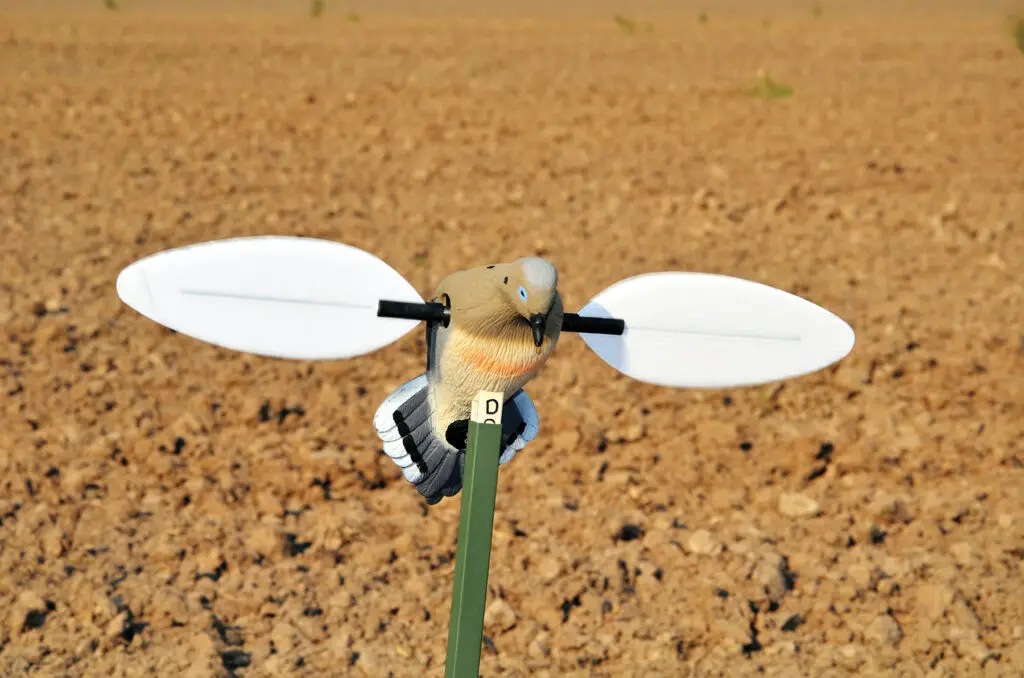Many people only hunt doves for a weekend or two, perhaps only one day, in September to kick off another hunting season, but the birds can provide exciting action into January.
The 2023-24 Alabama dove season opens in the North Zone at noon Sept. 2. The first split runs through Oct. 22. In the South Zone, the first split runs from noon Sept. 9 through Oct. 29.
The seasons reopen statewide from Nov. 18-26 and again from Dec. 16 until sunset on Jan. 14, 2024. Sportsmen can bag up to 15 doves per day in any combination of mourning and white-winged doves.
As a bonus, Alabama sportsmen may also shoot Eurasian collared doves, an exotic species native to south Asia, without limit or season. During dove season, collared doves do not count in the daily dove bag limit. Much bigger than mourning doves, collared doves grow nearly as large as park pigeons. The distinctive grayish-black collars around their necks and squared tails provide the best identifying features.

To hunt doves, sportsmen must first find them. Hundreds of birds might crowd a field one day, but disappear the next, particularly as hunting pressure increases. To find doves, look for the four main things they require: food, cover, water and grit.
“A dove’s diet consists of about 99 percent seeds,” says Seth Maddox, the Alabama Division of Wildlife and Freshwater Fisheries Migratory Game Bird Coordinator. “They eat any type of cultivated grain such as corn, millet, sorghum, also called milo, and even peanuts. They also eat native grass seeds, herbs and weed seeds. Occasionally, they’ll eat berries or maybe even something like snails for calcium.”
The small birds like to feed in fields with bare, open dirt at ground level under a protective leafy canopy that can hide them from hawks and other predators. Sunflower fields provide doves outstanding feeding conditions and cover. Many landowners plant sunflowers specifically for doves.
When feeding, doves usually cluster in a circle so they can watch for danger coming from all directions. Some sportsmen use spinning wing decoys on a pole that create flash like a bird landing. Place static dove decoys around the pole in about a 10-yard radius circle to simulate feeding birds. Attach a few more static decoys to low bushes, fence wires or other places to mimic lookouts.
Doves ordinarily feed at first light. After filling their bellies, they look for “nooning” places where they can rest and digest. While “nooning,” they perch in tall trees, on electrical wires or other places that give them good vantage points to watch for danger. They might stay in their perches most of the day unless disturbed. By late afternoon, birds want to feed again.
Toothless birds need to ingest small pieces of gravel or sand to help break up the hard seeds they swallow whole. Doves frequently go to grit piles or sandy patches to swallow grit, making these piles great places to hunt in mid-morning or afternoon.
Doves also need water to aid digestion. Right before sundown, doves look for a place to drink. In late afternoon, the birds commonly congregate around streams or ponds with sandy or gravel shorelines. A small bird like a dove does not need to visit a huge lake to drink. Just a tire rut filled with water on a gravel or dirt road could provide them with grit and liquid.
Ever mindful of predators, doves typically don’t go directly down to drink. They normally first land in a high vantage place to watch for predators before dropping to the ground. Therefore, when hunting near a water source, place a few decoys on tree limbs like lookouts. Then, add a couple more decoys in an open, gritty area near water to simulate dusting or drinking birds.
Hunters looking for more active, adrenaline-pumping excitement might try jumping doves. Almost like quail hunting, but without dogs pointing coveys for them, hunters walk along tree lines, fencerows, through low brushy savannas or high grasslands to flush birds from cover. Their broad, elliptical wings make a distinctive fluttering clatter, instantly alerting hunters to their presence.
Many sportsmen hunt private lands, but some public properties offer excellent dove action. Some better dove wildlife management areas include Barbour, Blue Springs, Geneva State Forest, Lowndes and Perdido River.
Many of the Special Opportunity Areas offer dove hunting opportunities. For a list of properties, regulations, seasons and other information, see outdooralabama.com/hunting/special-opportunity-areas.
For zone boundaries and other information, see outdooralabama.com/seasons-and-bag-limits/mourning-and-white-winged-dove-season.
John N. Felsher is a professional freelance writer who lives in Semmes, Ala. He also hosts an outdoors tips show for WAVH FM Talk 106.5 radio station in Mobile, Ala. Contact him at [email protected] or through Facebook.




